
Dada or Dadaism was an art movement of the European avant-garde in the early 20th century, with early centres in Zürich, Switzerland, at the Cabaret Voltaire, founded by Hugo Ball with his companion Emmy Hennings, and in Berlin in 1917. New York Dada began c. 1915, and after 1920 Dada flourished in Paris. Dadaist activities lasted until the mid 1920s.
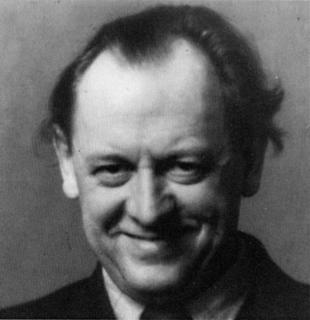
Kurt Hermann Eduard Karl Julius Schwitters was a German artist. He was born in Hanover, Germany, but lived in exile from 1937.

John Heartfield was a 20th-century German visual artist who pioneered the use of art as a political weapon. Some of his most famous photomontages were anti-Nazi and anti-fascist statements. Heartfield also created book jackets for book authors, such as Upton Sinclair, as well as stage sets for contemporary playwrights, such as Bertolt Brecht and Erwin Piscator.

George Grosz was a German artist known especially for his caricatural drawings and paintings of Berlin life in the 1920s. He was a prominent member of the Berlin Dada and New Objectivity groups during the Weimar Republic. He emigrated to the United States in 1933, and became a naturalized citizen in 1938. Abandoning the style and subject matter of his earlier work, he exhibited regularly and taught for many years at the Art Students League of New York. In 1959 he returned to Berlin, where he died shortly afterwards.
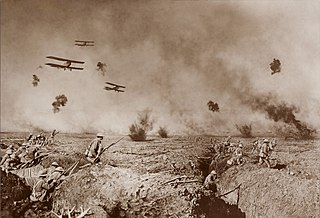
Photograph manipulation involves the transformation or alteration of a photograph. Some photograph manipulations are considered to be skillful artwork, while others are considered to be unethical practices, especially when used to deceive. Photographs may be manipulated for political propaganda, to improve the appearance of a subject, for entertainment, or as humor.
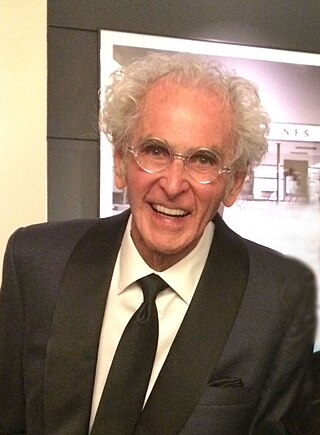
Jerry Norman Uelsmann was an American photographer.
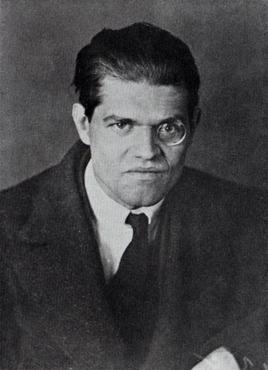
Raoul Hausmann was an Austrian artist and writer. One of the key figures in Berlin Dada, his experimental photographic collages, sound poetry, and institutional critiques would have a profound influence on the European Avant-Garde in the aftermath of World War I.

Hannah Höch was a German Dada artist. She is best known for her work of the Weimar period, when she was one of the originators of photomontage. Photomontage, or fotomontage, is a type of collage in which the pasted items are actual photographs, or photographic reproductions pulled from the press and other widely produced media.

Constructivism is an early twentieth-century art movement founded in 1915 by Vladimir Tatlin and Alexander Rodchenko. Abstract and austere, constructivist art aimed to reflect modern industrial society and urban space. The movement rejected decorative stylization in favour of the industrial assemblage of materials. Constructivists were in favour of art for propaganda and social purposes, and were associated with Soviet socialism, the Bolsheviks and the Russian avant-garde.

Maggie Taylor is an artist who works with digital images. She won the Santa Fe Center for Photography's Project Competition in 2004. Her work has been widely exhibited in the United States and Europe and is represented within the permanent collections of several galleries and museums.
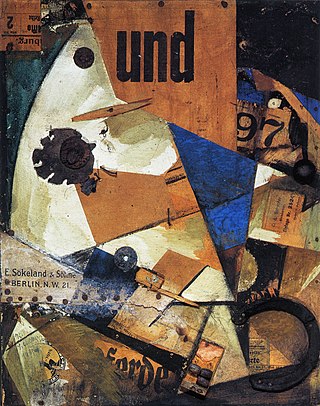
Collage is a technique of art creation, primarily used in the visual arts, but in music too, by which art results from an assemblage of different forms, thus creating a new whole.

Fatimah Tuggar is an interdisciplinary artist born in Nigeria and based in the United States. Tuggar uses collage and digital technology to create works that investigates dominant and linear narratives of gender, race, and technology. She is currently an associate professor of AI in the Arts: Art & Global Equity at the University of Florida in the United States.

The Berlinische Galerie is a museum of modern art, photography and architecture in Berlin. It is located in Kreuzberg, on Alte Jakobstraße, not far from the Jewish Museum. The Berlinische Galerie collects art created in Berlin since 1870 with a regional and international focus. Since September 2010, the museum's director has been the art historian Thomas Köhler, until then deputy director, succeeding Jörn Merkert.
The First International Dada Fair took place in Berlin in 1920. It was Grosz, Heartfield and Hausmann. It was to become the most famous of all Berlin Dada's exploits. It featured almost 200 works by artists including Hans Arp, Max Ernst, Hannah Höch, Francis Picabia, and Rudolf Schlichter, as well as key works by Grosz, Höch and Hausmann. The work Tatlin At Home, 1920, can be clearly seen in one of the publicity photos taken by a professional photographer; the exhibition, whilst financially unsuccessful, gained prominent exposure in Amsterdam, Milan, Rome and Boston. The exhibition also proved to be one of the main influences on the content and layout of Entartete Kunst, the show of degenerate art put on by the Nazis in 1937, with key slogans such as "Nehmen Sie DADA Ernst", "Take Dada Seriously!", appearing in both exhibitions.
Harley Gaber was a visual artist and composer known for his minimalist and spectral approaches to time and sound. With his emphasis on quiet sustained sonorities and textures, Gaber is counted among the early American minimalist composers, and considered to be a forerunner of drone and spectralism. His best known recorded composition, The Winds Rise in the North, has been called by musician Keith Fullerton Whitman "one of the holy grails of minimalism in music in the 20th century."

Dada - Review is a photomontage created by the German artist Hannah Höch in 1919.
Hanne Bergius is a German art historian and Professor for Art History with emphases on art, photography, modern design and architecture.
Alice Lex-Nerlinger was a German mid-20th century artist in the media of painting, photography, photomontage and photograms.

Die Plage is a large-scale photomontage installation by artist and composer Harley Gaber (1943–2011) consisting of roughly 4,200 canvases that interpret German history from the Weimar Republic to the end of World War II.

Daum Marries Her Pedantic Automaton "George" in May 1920. John Heartfield is very glad of it. is a painting created by using the combination of pencil, pen, brush and ink, watercolor and collage, by the German artist George Grosz, in 1920. The painting does have an original English title. It is held at the Berlin Landesmuseum fur Moderne Kunst, in the Berlinische Galerie.































